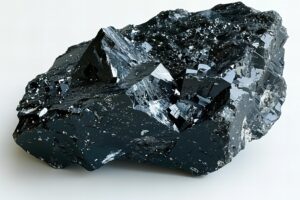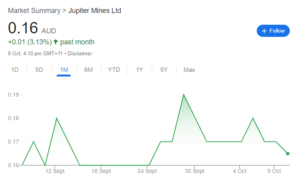Manganese: Why People Should Pay Attention to This Critical Battery Mineral
![]() Ujjwal Maheshwari, October 9, 2024
Ujjwal Maheshwari, October 9, 2024
Owning the atomic number 25 in the periodic table and playing a crucial role in the development of electric vehicles, the chemical element of Manganese is ubiquitous. In essence, the human body houses almost 25% to 40% of manganese in bones and critical organs such as liver, pancreas and kidney also contain a substantial amount of manganese deposits. Justifying ‘ubiquitous’, manganese is also a significant contributor of electric vehicles.
Manganese is also an excellent component that is capable of producing exceptional results when amalgamated with other chemical elements. Utilizing that virtue of Manganese, various appliances with uses in both industrial and domestic level is being developed.
Apart from these, Manganese alloys (combination of metals) are used all around. Ranging from the process of making steel to welding applications such as railroad tracks, manganese is often used in places where it is exposed to high levels of wear and impact. This shows that the element is completely robust.
Manganese in Batteries
Batteries are the single most largest non-alloy market for manganese. This primary non-metallurgical application of the element sums up for 2% to 3% of world manganese consumption. There are a variety of battery combinations used by different vehicle manufacturers that are compatible with their make and model.
Lithium & Manganese (Lithium Manganese Oxide – LMO Batteries)
Lithium which serves as the primary player in the making of batteries has found its way through to manganese thereby combining its strength with manganese’s flexibility to provide a high operating voltage and energy output. Moreover, this combination displays better thermal stability that reduces the potential risk of overheating of vehicles and thereby ensuring safety. All of these attributes together offer a relatively cost-effective battery solutions.
LMO batteries are also known as spinel batteries and they provide faster charging and discharging capabilities. The component of manganese in the combination of LMO batteries has terrific cycling performance. Cycling describes the repeated discharging and recharging process that a battery undergoes in service.
Lithium, Nickel, Manganese, Cobalt Oxide (NMC) Batteries
The critical combination of nickel and manganese in large proportions increases the battery’s density substantially and allows for longer driving ranges in electric vehicles. However, the higher proportions of nickel can make the battery unstable. To conquer this challenge, the presence of manganese is used to improve thermal stability and ensures safety.
Usually, in electric vehicles, the LMO materials are often blended with NMC. This paves way for both the compositions to overcome each other’s challenges. LMO part of the battery provides high current and high cycling performance and the NMC part enables longer driving ranges. Together, they enhance the performance of the electric vehicle.
The key point to note here is that the presence of manganese in both these types stimulated stability in the battery thus making this chemical element a crucial one in the scope of battery manufacturing.

Need for Manganese
This remarkable element has uses expanding from basic domestic needs to large scale industrial applications such as:
Trends in EVs
According to the global outlook 2024 analysis conducted by the IEA, International Energy Agency, nearly one in five cars sold in 2023 was electric. Transparently, this demand for opting to electric vehicles from traditional fuel vehicles shows the clear need for affordability and efficiency.
Since this surge in the electric vehicle manufacturing industry is increasing, the need to provide better services to their consumers also follows. Keeping that in mind, even the top quality battery combinations such as NMC and LMO require this one key component to enhance their performance … Manganese.
Trends in Domestic Usage
From consumption of variety of foods including, whole grains, nuts, soybeans, rice, coffee, tea and many spices such as black pepper to the widely used alkaline and dry cell batteries in household items such as TV/AC remotes, Manganese exists everywhere.
Since, Manganese is a metal that occurs naturally in the crust of the Earth, it is possible that traces of manganese exists in water as well. When rainwater passes through underground rock structures, it can potentially dissolve manganese.
Trends in Steel and Construction
According to the global construction market the activities of construction in 2023 was valued at nearly $15.26 trillion. It is expected to grow from that value to around $20.05 trillion in 2028. The market is then expected to grow at a compound annual growth rate of 5.94% from 2028 and reach $26.75 trillion in 2033.
All these numbers show how much the gravitas of construction and development is expected to reach.
Now, that key component Manganese, that contributes for about 85% to 90% of the steel production and machinery assembling is also expected to reach a heightened demand. To keep up with the demands of raw materials such as steel in construction, the production of Manganese needs to be expanded.
Suppling to the Demand
Jupiter Mines is an Australian registered public mining company. Listed under the Australian Securities Exchange (ASX) as ‘JMS’, this company explores, develops and produces manganese properties. This company has assets in Australia also extending to South Africa. Headquartered in Perth, Western Australia, this company’s primary asset, a 49.9% beneficial interest lies in Tshipi e Ntle, their flagship project. It is an independently operated and managed, black mining company which is currently carrying out operations in the Tshipi Borwa Manganese Mine. This mine is located in the rich Kalahari manganese field and it serves as the single largest Manganese mien in South Africa. It also stands as the third largest in the world.

In 2023, the company reported an impressive net income of AU$76.5 million, up 85% from the previous year, reflecting strong operational efficiency and higher sales. However, revenue saw a slight decline of 5.31% from AU$8.52 million to AU$8.07 million.
In 2024, Jupiter Mines’s revenue was around 8.07 million, a downfall of -5.31% compared to their previous year’s 8.52 million. Their earnings were estimated as 38.37 million which is again a decrease of -38.52% in comparison to their previous years’ performance.
Jupiter Mines aims to maintain their profitability by leveraging its low-cost mining operations and their excellent dividend strategy, making it an attractive investment option.
Additionally, the company has prioritized capital efficiency with its recent announcement of the company’s director boosting shares between the shareholders and productivity in its mining operations. This focus, blended with its transparency in mining operations, positions the company as a reliable long-term investment in the resource sector. Looking forward, Jupiter Mines aims to capitalize on the growing global demand for the element of manganese, especially in the production of steel and emerging battery technologies, making its long-term growth outlook promising.
The company has undertaken many initiatives to produce Manganese with a number of sustainability guidelines in place. These practices strategically placed them as a long-term player in the global manganese market.
Conclusion
Understanding the demands and catering to that typically paves way for rising profitable companies. In that list, Jupiter Mines comprehended the need for manganese in sectors such as vehicle manufacturing and construction. This allowed them to capitalize on the demand for manganese by producing top quality material to boost the manganese dependent sectors. Their frontrunner project Tshipi e Ntle, currently the single most largest manganese and iron mining ores in the world is significantly increasing their revenue.
The ongoing demand dictates the need for quality manganese supply chains. Jupiter Mines, with its low cost operations and focus on long-term manganese production is well positioned to meet this demand. By efficiently managing its resources and maintaining high profitability, the company ensures a steady supply of this crucial metal, contributing significantly to both traditional and future-forward industries.
What are the Best ASX Stocks to invest in right now?
Check our buy/sell tips
Blog Categories
Get Our Top 5 ASX Stocks for FY25
Recent Posts
What Falling Interest Rates Mean for Australia’s Housing Market and Related Industries
The Australian economy is continuously influenced by movements in interest rates. Recently, the Reserve Bank of Australia (RBA) signalled a…
Here are the biggest tax implications of investing in stocks and how to slash your bill
The tax implications of investing in stocks are not often considered when you first start investing, although you may get…



